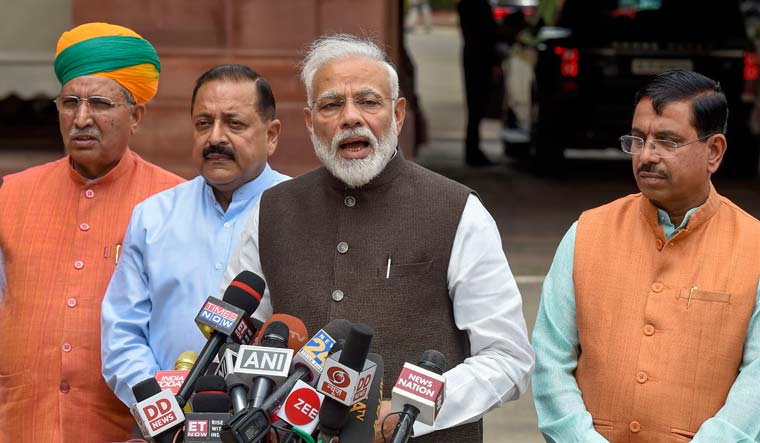
With the BJP expected to achieve majority in the Rajya Sabha by 2020, thus allowing it to aim for key reforms which will require Constitutional amendments, Prime Minister Narendra Modi has revived his idea of holding simultaneous elections to Lok Sabha and state assemblies. Modi called a meeting of Opposition parties on June 19 to take the idea further.
The idea was pushed by Modi during his previous tenure, following which Law Commission and the NITI Aayog suggested a way forward. Now, the massive mandate ensures that the government can push the reform, despite some opposition. The government is pushing for simultaneous polls to avoid execssive expenditure on conducting elections, and disruption in governance.
Conducting elections will require undertaking different changes in the statute books, in not just extending or curtailing the tenure of state assemblies, but also changing rules governing no-confidence motion, hung house, budget defeat, and mid-term polls.
That is easier said than done. The Law Commission, which went through the existing provisions, suggested legal recourse. Modi government will need to convince the Opposition parties to accept the one nation, one poll idea.
The foremost change would be the curtailment or extension of tenure of the existing state assemblies. This will entail amendment to the Article 172 of the Constitution. This article defines the duration of the state legislatures, which is fixed at five years unless sooner dissolved. This article also states tenure can be extended by one year in case of Emergency. This amendment in Article 172 may need insertion of a new clause for extension/curtailment of the terms of legislative assemblies of certain states; and (ii) limiting the terms of the state legislative assemblies constituted as a result of the elections.
To start with, if all state elections falling in a year needs to be conducted simultaneously, then the provisions contained in Articles 85(1) and 174(1) of the Constitution and the provisos to sections 14 and 15 of the Representation of Peoples Act 1951 may be amended suitably.
After drawing a roadmap of curtailment or extension of the state assemblies, the government may have to seek ratification by not less than one-half of the states as an abundant caution.
The other changes needed to be made will include changing the rules governing the 'No Confidence Motion'. This is being suggested so that after simultaneous elections, the governments needs to have a fixed tenure of five years. For this, Rule 198 of the Rules of Procedure and Conduct of Business in Lok Sabha have to suitably amended. Amendments on similar line should be made in the Rules of Procedure of various state legislative assemblies.
Once simultaneous elections are held, the rules in event of a hung parliament /hung Assembly need to be looked into.
In case any alliance fails to form the government, then the constitutional head may call for an all-party meet to tide over the stalemate. If the options fail, mid-term polls become inevitable. However, the duration of the house/assembly so constituted shall be only for the remainder of the term.
The fixed tenure governments come with another possibility. Though the government may continue, it could witness a crisis where alliance partner/s withdraw their support on account of the budgetary proposals; then, the Law Commission recommended that efforts to build a consensus must be made to avoid mid-term polls. If all such efforts fail, then mid-term polls must be held.
However, the midterm polls will ensue for the remainder of the term so that the cycle of simultaneous elections is not disrupted. This would need changes in the Articles 83(2) and 172(1) of the Constitution.
Modi revives idea of simultaneous national elections. Will he succeed?
![Modi revives idea of simultaneous national elections. Will he succeed?]() Reviewed by audrinadaniels
on
June 17, 2019
Rating:
Reviewed by audrinadaniels
on
June 17, 2019
Rating:


No comments: